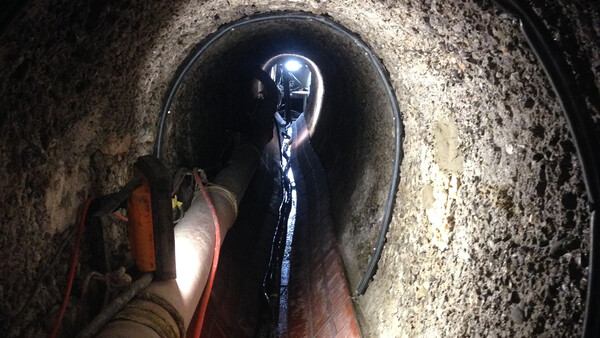Repair & reinforcement of centuries-old tunnels on the Douro Line - Vargelas & Fontainhas tunnels - Vargelas & Pocinho Stations, Portugal
The aim of the repair and reinforcement work was to rehabilitate the Vargelas and Fontaínhas tunnels along their entire length, in order to maintain an adequate state of conservation and extend the useful life of the stone masonry tunnel structure built in 1887. The challenge was to materialise a reinforcement solution that would make it possible to maintain the height of the tunnels and with the relevant constraints.
On this page
- Topic
- Repair & reinforcement of centuries-old tunnels on the Douro Line
- Object
- Vargelas & Fontainhas tunnels
- City
- Vargelas & Pocinho Stations
- State
- Districts of Viseu & Guarda
- Country
- Portugal
- Date
- Duration
- 6 Months
System
Project Description
Situation
The tunnels showed significant structural damage, with open cracks of high severity, sometimes with tailings and in some cases associated with deformations of the vault. They also had extensive areas of degraded, eroded joints, which occasionally reached complete collapse.
The constraints of the intervention included the line being closed from 10pm to 6am, the fact that it was located in the area of the National Ecological and Agricultural Reserves, classified as a UNESCO World Heritage Site, the Alto Douro Wine Region, which implied, among other things, special waste management clauses. The available space and access, existing gauges, lighting and ventilation of the tunnel were also taken into account.
Solution
Based on the survey carried out, it was decided to implement four rehabilitation and reinforcement solutions:
Type 1 Solution: Outside the Tunnel - Tympanum and Return Walls of the Inlet and Outlet Openings
Previous cleaning of the masonry (under controlled pressure), brightening and refilling of joints (S&P ARMO-mur), nailing of the tympanum wall next to the frame of the inlet and outlet openings.
Type 2 Solution: Inside the Tunnel - near the tunnel entrances and exits
For an extension of around 15 m from the tunnel entrance and exits, cleaning, repairing broken blocks, brightening and closing joints, treating cracks with mineral regularisation mortar and structural reinforcement with a lime-based mortar system (S&P ARMO-mur) associated with carbon fibre mesh coated with amorphous mineral silicate (S&P ARMO-mesh 200/200).
Type 3 Solution: Inside the Tunnel - Remaining Extension
Cleaning, repair of cracks and broken blocks, treatment of protruding elements, whitening and re-sealing of joints (S&P ARMO-mur) and treatment of areas with deep erosion in the masonry.
Type 4 Solution: Inside the Tunnel
The solution consists of reinforced concrete reinforcement panels, with main and secondary panels. The main reinforced concrete panels are made up of 0.25 x 0.25 metre "staves", spaced 1.20 metres apart, locked at the base with tubular metal profiles. The "lower beam" is made up of an SHS profile embedded and filled with S&P Tecnogrout-N Rapido fast setting mortar, leaving waiting rods. Openings were made in the shafts and vault, and the reinforcements were mounted on them, leaving the waiting reinforcement embedded in the metal profile. Then, after the formwork had been erected, the staves and the secondary panels between them were filled with S&P Tecnogrout-N mortar in stages.
A Type 4 solution was also considered for the Vargelas tunnel to repair the deformation of the vault.
The particular characteristics of the S&P ARMO System, a mortar solution reinforced with a carbon fibre mesh in a thin layer (in this case 3 cm thick), made it possible to maintain the required space and shape inside the tunnels. This, combined with the rapid curing characteristics of the S&P Tecnogrout-N Rapido fluid repair mortar, made it possible to carry out this project in the limited daily time window available.
Material
S&P ARMO-mesh 200/200 - 780 m²
S&P ARMO-mur - 81 025 kg
S&P Tecnogrout-FIB - 3 000 kg
S&P Tecnogrout-N - 65 500 kg
S&P Tecnogrout-N Rápido- 17 500 kg





